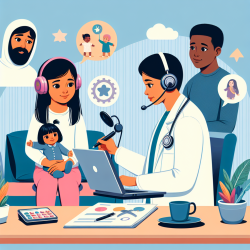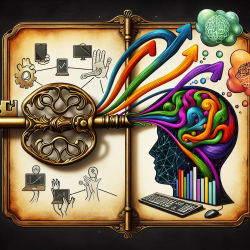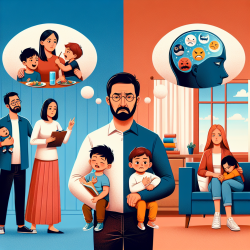GM1-gangliosidosis is a rare neurodegenerative disorder that results in early mortality and a progressive decline in physical and cerebral functioning. Despite the severity of the condition, no approved treatments currently exist. This highlights the critical need for data-driven, patient-focused therapeutic approaches. The research article "GM1-gangliosidosis: The caregivers' assessments of symptom impact and most important symptoms to treat" by Bingaman et al. (2023) provides invaluable insights into caregiver priorities, which can be leveraged to improve therapeutic outcomes for children with GM1-gangliosidosis.
Understanding the caregiver perspective is essential for developing effective treatments and interventions. The study by Bingaman et al. employs a two-part, mixed-methods approach that includes focus groups and interviews with caregivers. This comprehensive methodology ensures that the findings are robust and reflective of the real-world challenges faced by families. Below, we discuss the key outcomes of this research and how practitioners can use these insights to enhance their therapeutic strategies.
Key Findings from the Study
The study identifies several symptoms that caregivers prioritize for treatment, focusing on those that would most improve the child's lifespan and quality of life (QoL). These symptoms include:
- Communicating wants and needs
- Preventing pain and discomfort
- Mobility and body movement
- Enhancing eating and feeding
While lifespan extension is highly valued, caregivers emphasize that an increased lifespan is only desirable if accompanied by an acceptable quality of life. This underscores the importance of holistic approaches that address both the physical and emotional well-being of the child.
Implementing Caregiver Insights in Therapy
Practitioners can incorporate these caregiver priorities into their therapeutic approaches in several ways:
1. Focus on Communication Skills
Enhancing a child's ability to communicate their wants and needs can significantly improve their QoL. Speech-language pathologists can employ various techniques such as augmentative and alternative communication (AAC) devices, sign language, and picture exchange communication systems (PECS) to facilitate better communication.
2. Pain Management
Preventing pain and discomfort is crucial for maintaining a child's QoL. Practitioners should collaborate with medical professionals to develop comprehensive pain management plans that may include medications, physical therapy, and alternative therapies such as massage or acupuncture.
3. Mobility and Physical Activity
Maintaining mobility is essential for a child's independence and overall well-being. Physical therapists can design personalized exercise programs that focus on strengthening muscles, improving coordination, and enhancing flexibility. Incorporating fun and engaging activities can also motivate children to participate actively in their therapy.
4. Nutritional Support
Enhancing eating and feeding skills is another critical area. Occupational therapists can work on developing fine motor skills and providing adaptive utensils to facilitate self-feeding. Nutritional counseling can also help in ensuring that the child receives a balanced diet tailored to their specific needs.
Encouraging Further Research
While the study by Bingaman et al. provides valuable insights, it also opens avenues for further research. Practitioners are encouraged to explore the following areas:
- Longitudinal studies to track the effectiveness of various therapeutic interventions over time
- Comparative studies to identify the most effective communication and mobility aids
- Research on the psychological impact of GM1-gangliosidosis on both the child and the caregiver
By continuing to build on the existing research, practitioners can contribute to a more comprehensive understanding of GM1-gangliosidosis and develop more effective, data-driven therapeutic approaches.
Conclusion
The study "GM1-gangliosidosis: The caregivers' assessments of symptom impact and most important symptoms to treat" offers crucial insights into the priorities of caregivers, which can significantly inform therapeutic practices. By focusing on communication, pain management, mobility, and nutritional support, practitioners can enhance the quality of life for children with GM1-gangliosidosis. Additionally, continued research in this field will further refine and improve therapeutic strategies, ultimately leading to better outcomes for affected children and their families.
To read the original research paper, please follow this link: GM1-gangliosidosis: The caregivers' assessments of symptom impact and most important symptoms to treat.










